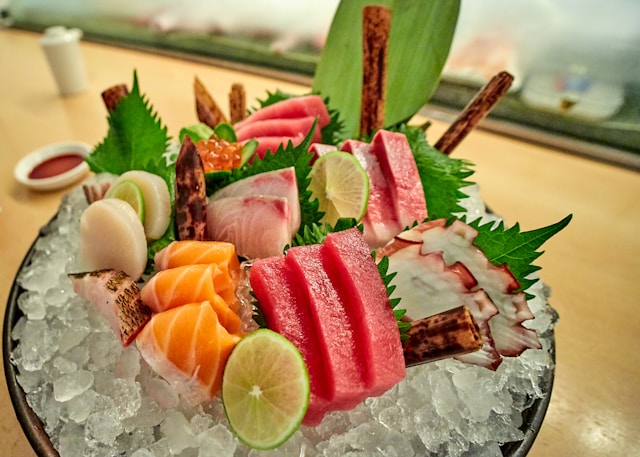Worried about embarrassing yourself at a Japanese restaurant? Confused about the difference between sashimi and sushi? Let me clear things up for you right now.
Sashimi (刺身) is simply thinly sliced, raw food – mostly seafood but can include other things too. And no, it’s NOT sushi! Sushi always includes vinegared rice, while sashimi is just the pure, raw ingredient.
Sashimi isn’t limited to just seafood, though that’s what you’ll most commonly find. You can also enjoy beef, horse, deer, yuba (tofu skin), and konnyaku as sashimi. This versatility makes sashimi one of the most famous dishes in Japanese cuisine.
Where to Find Authentic Sashimi in Japan
If you’re traveling through Japan, you don’t need to hunt for fancy restaurants to enjoy good sashimi. You can find it practically everywhere:
- Regular restaurants
- Izakaya (Japanese pubs)
- Teishoku restaurants (set meals)
- Traditional kaiseki restaurants (multi-course meals)
When served, sashimi typically comes on a bed of shredded daikon radish with shiso leaves as garnish. The daikon isn’t just for decoration – it helps cleanse your palate between different types of sashimi. Some restaurants even display the rest of the fish as decoration alongside your meal, showcasing the freshness of the ingredients.
How to Eat Sashimi Like a Local
Here’s your quick guide to eating sashimi properly:
- Pour a small amount of soy sauce into your dish (don’t flood it!) – this is considered good manners
- Dip each piece lightly into the soy sauce
- For wasabi or ginger: dab directly on the fish instead of mixing into soy sauce for the most elegant approach
- The daikon and shiso garnishes are edible and refreshing – try them! They have a fresh, minty taste that pairs well with the fish
Popular Sashimi Types You Must Try
Fish Varieties
Maguro (Tuna)
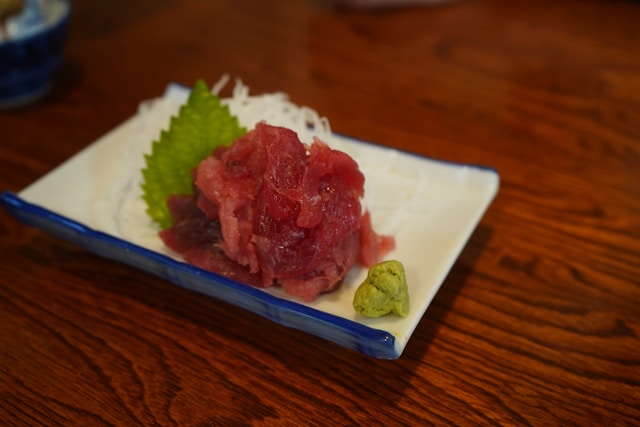
Available everywhere in Japan. The deep red akami (lean meat) is common, but if you want the real premium experience, go for toro (fatty belly) which comes in chutoro (medium-fatty) and otoro (super premium fatty). The melt-in-your-mouth sensation of otoro is something you’ll remember forever. Some of the most prized tuna are caught off Cape Oma at the northernmost tip of Aomori Prefecture.
Sake (Salmon)
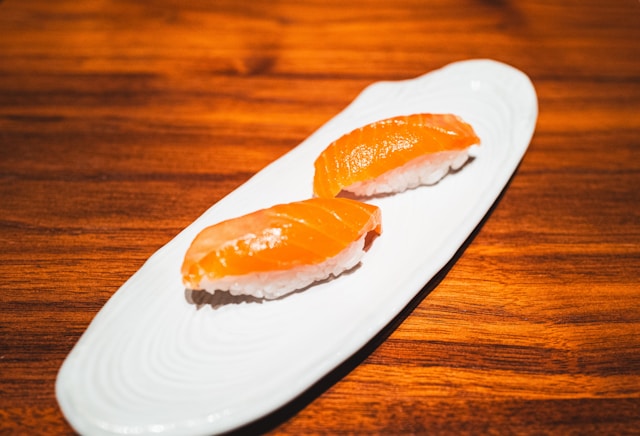
That bright orange, tender, fatty goodness is always a safe bet if you’re new to sashimi. Look for salmon toro (the fattier belly portion) for an even richer experience. The texture is tender and the flavor is deliciously fatty.
Tai (Sea Bream)
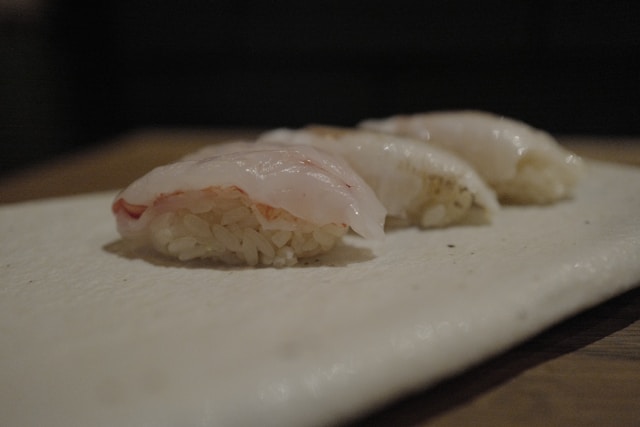
With its mild, subtle flavor, tai is considered top-tier white fish in Japanese cuisine. It’s often served during celebrations like weddings and during the New Year, symbolizing good fortune and happiness.
Saba (Mackerel)

This oily fish has a smooth, meaty flavor that pairs beautifully with green onions and grated ginger. You might also find shimesaba (lightly pickled in vinegar) which helps preserve freshness and reduce fishiness. The pickling gives it a light, vinegared flavor that’s less “fishy” than raw mackerel.
Katsuo (Bonito/Skipjack Tuna)

A central ingredient in dashi (fish stock), katsuo is one of the most important fish in Japanese cuisine. While available as pure sashimi, it’s more commonly served as Katsuo no Tataki – lightly seared on the outside, raw inside, and typically comes with citrus sauce and garnishes like garlic or grated ginger.
Kanpachi (Greater Yellowtail/Amberjack)
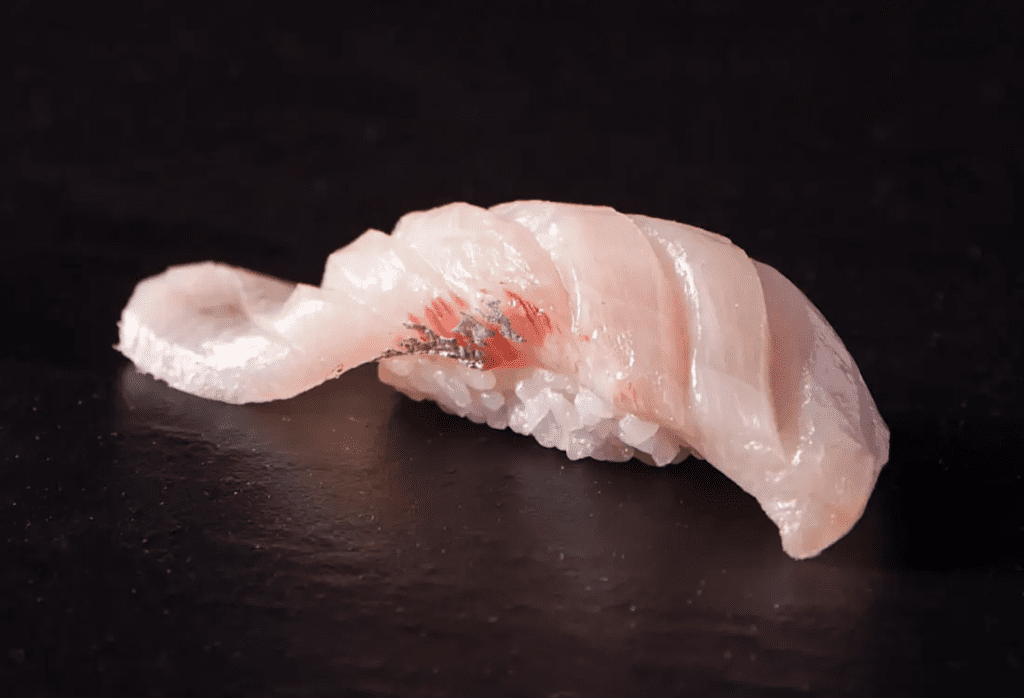
Kanpachi has a lighter, more translucent color than buri. This lean, mild fish is at its best in early summer. It’s often confused with hamachi/buri but has subtle differences in taste and texture.
Buri/Hamachi (Yellowtail or Amberjack)
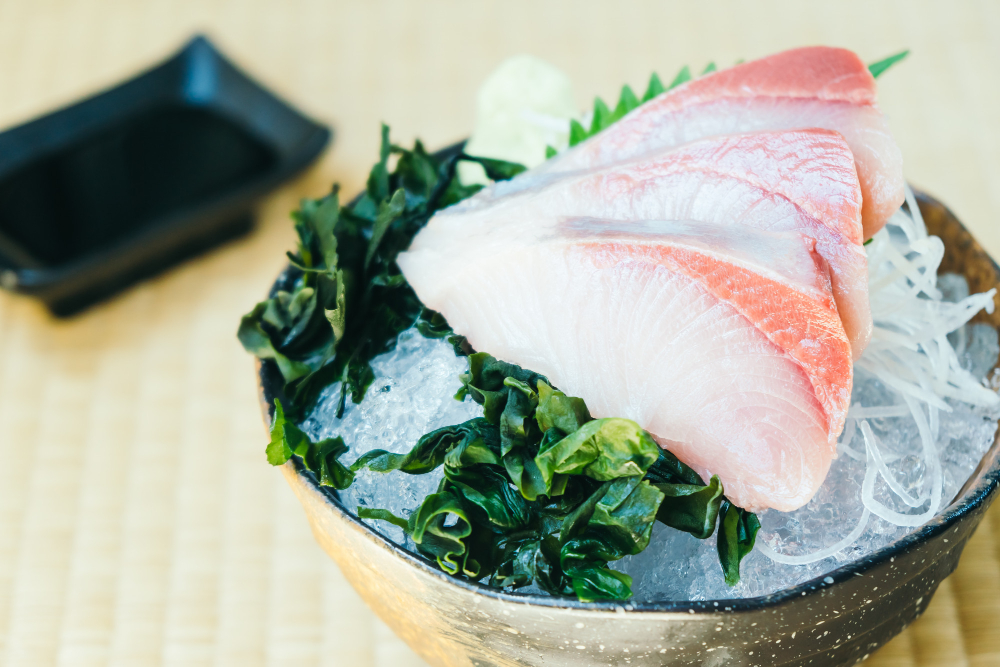
Closely related to kanpachi, buri (also called hamachi) has a translucent, pinkish white flesh with high fat content that gives it a rich, buttery flavor. It’s available year-round but considered best in winter when the fat content is highest.
Shellfish and Mollusks
Ika (Squid)
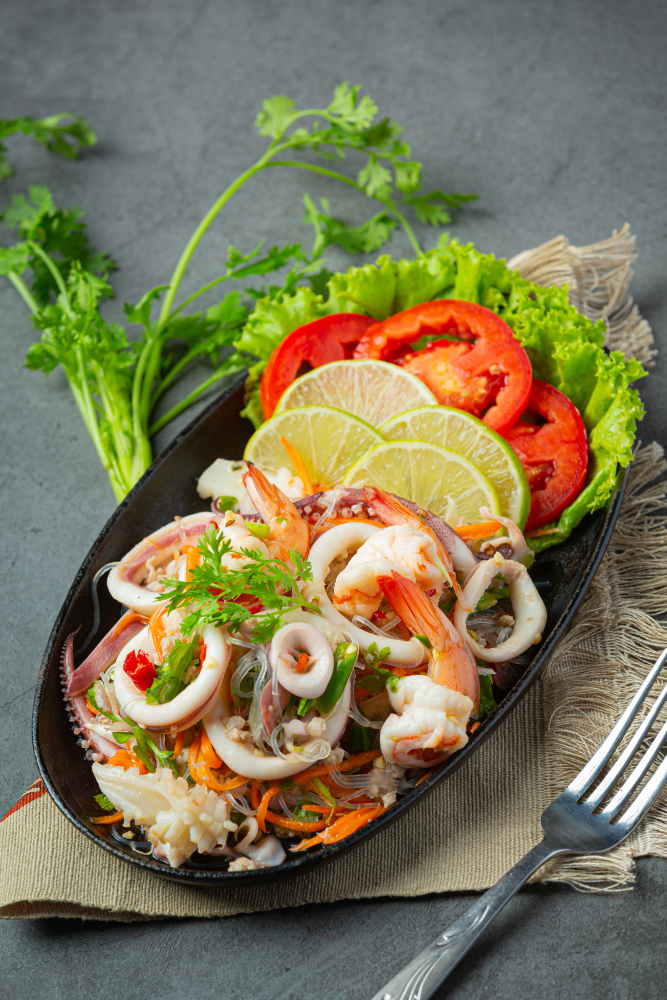
With its translucent white flesh, firm texture, and mild flavor, ika is super common. The squid’s legs are usually reserved for other dishes, while the mantle is served as sashimi. Sometimes served as “ika somen” – cut into thin strips resembling noodles.
Tako (Octopus)
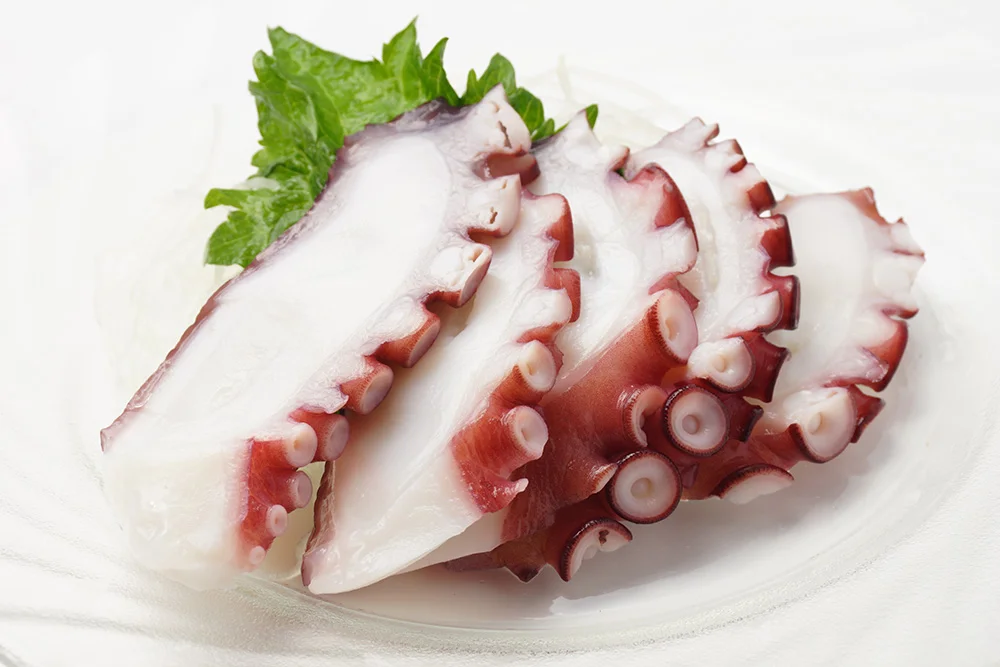
Often thinly sliced tentacles, tako can be eaten raw but is commonly poached first for a sweeter flavor and firmer texture. The poaching process brings out the natural sweetness of the octopus while maintaining its distinctive chewiness.
Amaebi (Sweet Shrimp)
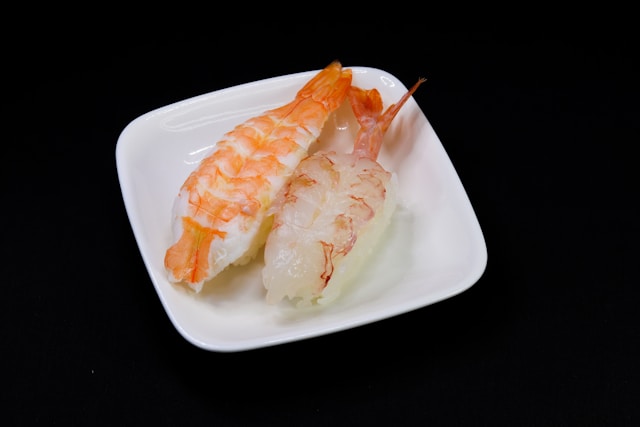
These shrimp are served with most of the shell removed except for the tails (which some people eat). They have a sweet, subtle flavor that gives them their name. The best amaebi come from Niigata and Hokkaido where the cold waters produce exceptionally sweet specimens.
Hotate (Scallop)
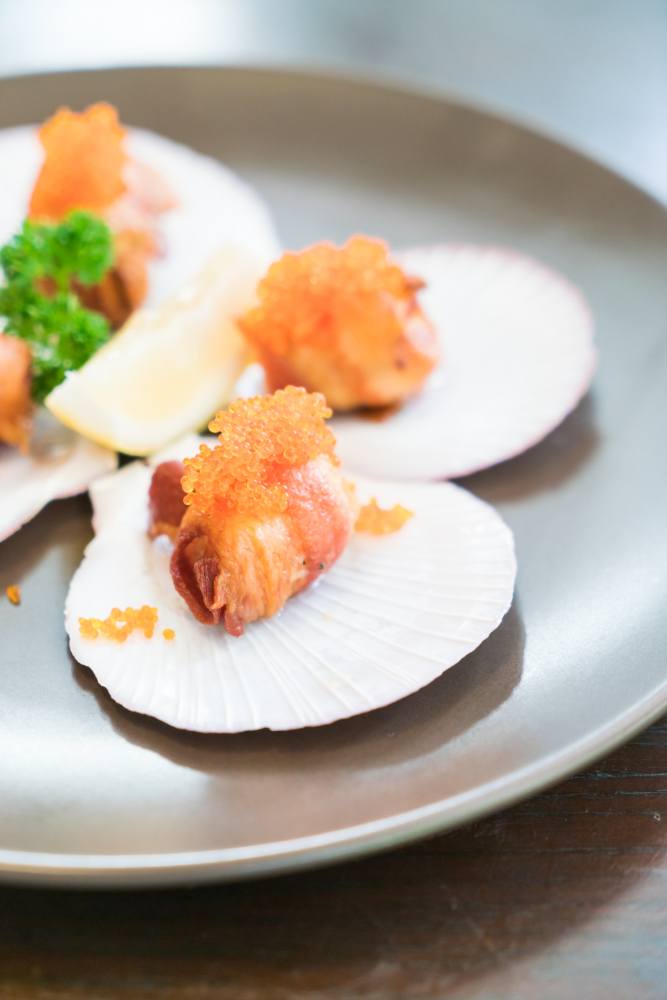
Premium hotate have a firm texture and sweet, almost creamy taste. Some places serve just the white abductor muscle, while others include the viscera, which has a sharp bitterness that contrasts nicely with the smooth, mild meat. Hokkaido and Aomori produce Japan’s best scallops thanks to their clean, cold waters.
Hokkigai (Surf Clam)

This triangle-shaped clam foot is often lightly boiled, turning the tip red and firming up the meat. It has a meaty texture and sweet flavor, best in winter. Many are harvested in northern regions like Hokkaido and the Sanriku Coast, though these days many hokkigai are imported too.
Roe and Delicacies
Ikura (Salmon Roe)
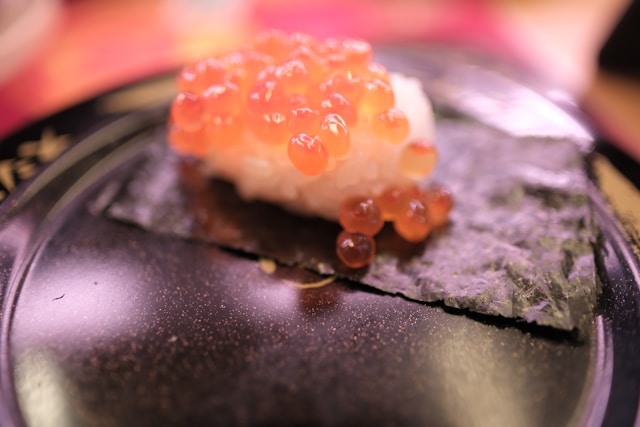
These bright orange pearls are cured in salt or soy sauce. Each egg is about the size of a pea and bursts in your mouth with rich, salty ocean flavor. Hokkaido is known for the best ikura, with its clean, cold waters producing exceptionally flavorful roe.
Uni (Sea Urchin)
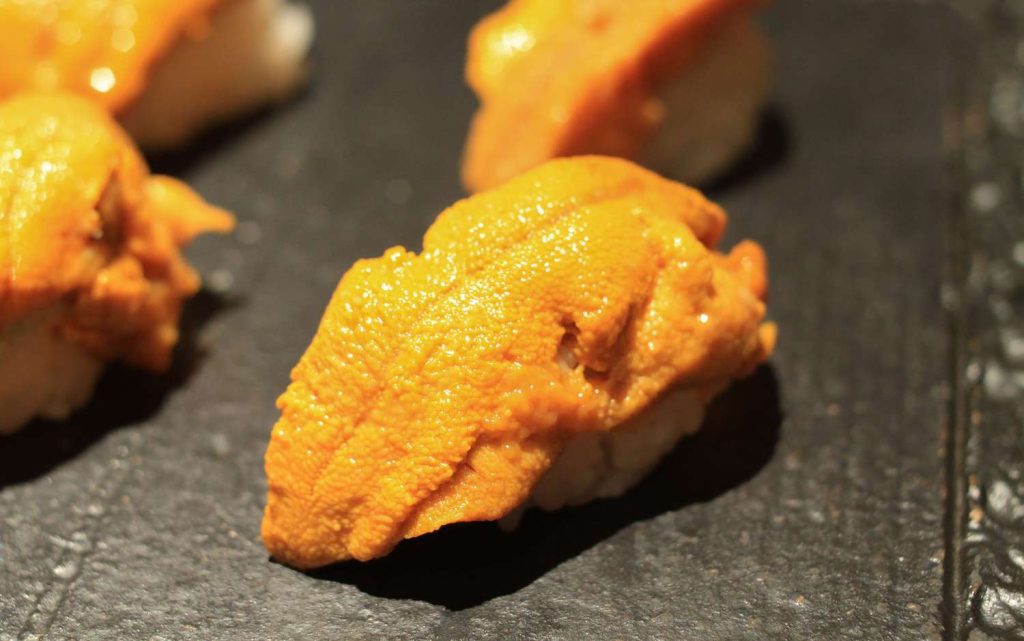
This yellow to orange colored roe is a particularly prized (and expensive) delicacy in Japan. It has a rich, buttery texture and a sweet, briny flavor reminiscent of the ocean. The best uni comes from Hokkaido, where the cold waters produce uni with the perfect balance of sweetness and ocean flavor.
Seasonal Considerations
While many types of sashimi are available year-round, the Japanese appreciate seasonality in their food. Different fish are considered to be at their peak during different seasons:
- Buri (yellowtail) is best in winter when it has the highest fat content
- Kanpachi (amberjack) is at its peak in early summer
- Saba (mackerel) is best enjoyed when in season due to its quick spoilage rate
- Hokkigai (surf clam) is considered best in winter
Japanese chefs place enormous importance on serving fish at the peak of its season, when the flavor and texture are at their best. This attention to seasonality is part of what makes Japanese cuisine so special.
Regional Specialties
Different regions of Japan are known for particular types of sashimi:
- Hokkaido: Famous for exceptional uni (sea urchin), ikura (salmon roe), and hotate (scallops)
- Aomori: Known for premium tuna caught off Cape Oma and excellent scallops
- Niigata: Renowned for high-quality amaebi (sweet shrimp)
- Sanriku Coast: Famous for various shellfish including hokkigai (surf clam)
When traveling through these regions, be sure to try their local specialties for the freshest, most authentic experience.

